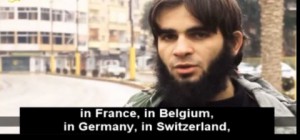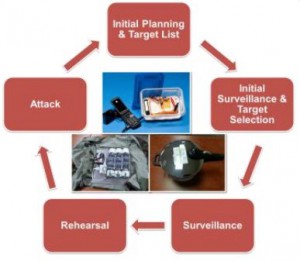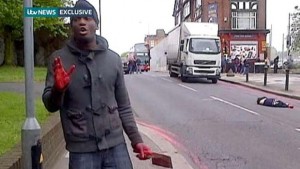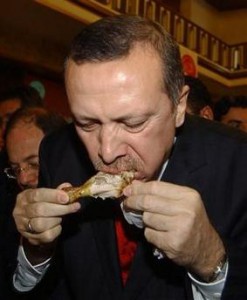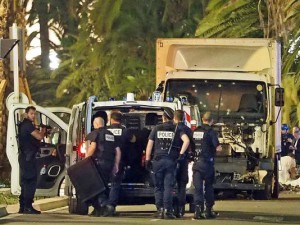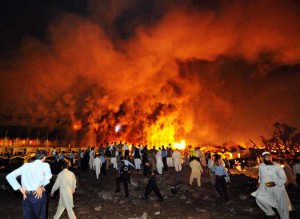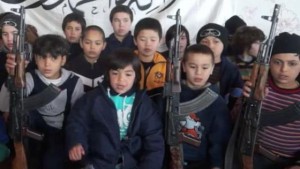The proto-state established by ISIS between Syria and Iraq faces grave external threats caught between the international airpower and ground forces of the Syrian and Iraqi governments, Shiite militia and opposition groups. However ISIS’s elite will regard the brutal war it initiated in the Middle East as unfinished. The extremist groups regional and global war is constantly shifting, operates in a permanent shroud and its puritanical ideology and sectarian narratives with a potent brand of ultra-violence promoted by the leader of the group Abu-Bakr al-Baghdadi (and its previous leader Abu Musab al-Zarqawi) have never been more powerful and influential on contemporary developments in modern jihadism.
Equipped with digital entrepreneurs, skilled fighters, and a new generation of ideologically committed youth, ISIS have shown no hesitation in expanding its war to the heartland of Europe and initiating a new stage in the age of hyper-terrorism. This new stage is likely to be more consequential than the violence spear-headed by Al-Qa’ida in Europe during the 2000s.
The key threat for the national state, as identified by policymakers, is the return of extremist foreign fighters from Syria and Iraq. In 2015, it was estimated by the International Centre for the Study of Radicalisation that ‘the total number of foreign fighters in Syria and Iraq exceeded 20,000 – of which nearly a fifth were residents or nationals of Western European countries.’ The threat of home-grown extremism, embedded terrorist cells and ‘lone-wolves’ has multiplied across the European continent since the Syrian War broke out as Europe and the United States have faced significant problems in preventing attacks against civilians from occurring. As the U.S and Russian coalitions have driven ISIS forces back and suffocated it of resources and territory, the gains have not been without consequence as it has increasingly encouraged vast numbers of ISIS’s foreign fighters to return home. They bring with them their battle-hardened experience, their post-traumatic stress disorders, their objectives and commitment to realise their ideology.
However it is an oversimplification to suggest ISIS-imported foreign fighters are the only threat to the continent. Europe’s and the United States’ own instability, its political polarisation, the poisonous atmosphere across European politics, soaring unemployment, the euro crisis, and rising anti-immigrant and refugee rhetoric and violence have been and will be the perfect tensions for ISIS to tap into. As writer and novelist Pankaj Mishra asserts‘Isis is only one of its many beneficiaries; demagogues of all kinds have tapped the simmering reservoirs of cynicism and discontent’ as demonstrated by the resurgence of far-right organisations and populist politics across Western states and the rise of politicians such as Nigel Farage, Jeremy Corbyn, Marine Le Pen, Donald Trump, Bern Lucke, and Geert Wilders.
ISIS’s eradication of physical borders and the ascension of globalisation and the technological revolution allowed the terrorist organisation to advocate the establishment of a digital caliphate across the globe. These have had terrifying implications for Europe as home-grown extremist and terrorist sub-cells are being established by European nationals.
Scattered across Europe, difficult to track, and fuelled by a variety of contextual factors under the guise of holy war these cells, inspired by Baghdadi and Zarqawi’s doctrine, have been eager to replicate their brutal tactics. ISIS will not be able to establish a caliphate, however it will be capable of conducting either stunning attacks, as illustrated by Brussels, Paris, London, New York, Orlando and Madrid, or do-it-yourself attacks with rudimentary weapons against policemen, soldiers, and civilians as seen in Greenwich, Ottawa, Nice, Sydney, Lyonand San Bernardino. These acts of violence are designed to foment religious and racial war, strengthen hardliners and create disorder, civil unrest and violence. In-turn the toxic rhetoric of the far-right groups in Western states paranoid by a continent ‘overrun’ by Muslims and ISIS’s twisted narrative of an apocalyptic new world order feed off each other in the emotionally and politically charged aftermath of a terrorist attack. It is a predictable cycle of provocation and retribution which has grown uglier and uglier since the 9/11 attacks.
ISIS is lethal because it is not a monolithic force despite being a state forged in the fires of Syria and Iraq. ISIS’s black banners are instantly recognisable, it ‘has built a global brand to rival Western corporations using tools like social media, product placement and targeting advertising.‘ ISIS have a target audience, ‘young, nominally Muslims…heavily influenced by propaganda videos and steeped in jihadi culture in the Internet and the real world’ (Burke, The New Threat, 210)
Its audiences take interest in the products on display even if the product is profoundly deceptive about the realities of the wars across the Middle East. While almost all Muslims across the world reject its poisonous ideology, its thousands of subscribers and outsourced activists are capable of delivering devastating impact in the captivating pantomime and the world of 24/7 media and instant digitalised news.
The Middle Eastern wars have been crucial in giving ISIS a platform to attract subscribers to its vicious culture of violence. Outside the Middle East ISIS shifts from being a state and militia group to an interconnected, diverse movement which has rooted itself in a once marginalised branch of jihadi sub-culture. It has become an umbrella organisation for inspiring me-too zealotry in Pakistan, Gaza, Afghanistan, Nigeria, Libya, Algeria, Egypt, France, Belgium, the United States, and the United Kingdom.’
ISIS is, as many commentators contend, an ‘anti-traditional ideology with a very significant debt to western political history and culture’. However it is its allure as an anti-establishment, social movement, and populist outlet which makes it deadly as it has rooted itself in contemporary socio-economic problems and grievances in post-modern European societies. The creation of extremists in Europe does not predominantly take place in the places we would assume such as mosques, but in private homes, in cafes, university, gangs, crime, prisons, offices, harassment by security services, and group holidays. The suicide bombers who tore through the World Trade Centre in 2001 were well-educated, technically savvy men who blended well with their communities.
ISIS’s threat to Europe is rooted in the uncomfortable truth that its Western supporters and fighters, while a small number, are not so different from us in the way they operate and think. ISIS and militant European jihadists exploit the best and worst of contemporary Western culture. ISIS seek to exacerbate a narrative exposing Western values and system for what they really are; hypocritical, self-serving, full of false hopes and promises, neo-colonialist and a culture which systematically persecutes Muslim communities. These half-truths can be defined as grossly oversimplified whereas the reality is far more complex.
However in the age of entitlement, information as supposed to enlightenment, individualism, a time of extravagant promises which have been made redundant by austerity, and racism against immigrants, refugees and Muslims, it is understandable why ISIS have not struggled to find sympathisers, self-fashioned militants and freelance jihadists in our societies willing to pledge themselves to their cause. ISIS’s propaganda, while misleading, promises the individual which decides to commit mass-murder that they are part of a bigger story and that they matter. ISIS’s message promises the release of the anxiety and frustrations of the private life and channels it into horrifying violence against the establishment and status quo as exemplified by the Grand Theft Auto style attack in Nice.
In the Western world where individualism, rather than community, is the predominant social driver, ISIS’s very Western promises of fame, instant celebrity status, its use of manipulative mass media, creating an an illusion of identity and purpose, and fulfilling a sense of self are seductive even when it is small groups of men and women which commit utterly repugnant acts of violence against their own communities.
ISIS became several things at once after it established a caliphate in 2014. It is a corporation, it is a state, it is a movement, it is a financial and business network, it attracts poor and rich, its members vary from former criminals to middle-class thinkers, it is a digital and territorial caliphate, it empowers individuals (a very Western idea) and at the same time promises to realise the promise of the community of umma, it exports Holy War as a simplified product much like a corporation would, it uses mass-media, and it is multi-national with Baghdadi acting as its current chairmen while the likes of Mohammed Emwazi (a.k.a Jihadi John) and Zarqawi were its grotesque superstar celebrities. ISIS successfully bridged the gap between being a conventional terrorist organisation to become a mass social movement and cult of violence and with that its advert of martyrdom and ultra-violent ideology has gone mainstream. This is something Al-Qa’ida never quite achieved and precisely what makes ISIS more deadly as a concept across the Middle East and Europe.
theconflictarchives.com/
